Krav Maga is not a ceremonial martial art but there are Krav Maga belts and corresponding Krav Maga levels. Training in Krav Maga Worldwide self-defense involves progressing through the Krav Maga belt system.

The creator of Krav Maga, Imi Lichtenfeld, designed Krav Maga to be easy to learn and easy to recall under stress. One of the great things about the Krav Maga belt system is that it is progressive. The skills that students learn in Level 1, when they are working toward their yellow belt, are the foundation for what they learn in Level 2, and so on.
Every level of Krav Maga self-defense training builds upon the previous level. Each level also introduces new skills and involves increasingly complex situations and tactics.
How it works.
There are 5 Krav Maga levels and 6 Krav Mag belts that can be earned through training in those levels. Belt progression in terms of belt color goes from Yellow to Black.
Progressing to the next level of training and belt color requires students to test. Each level of training has specific benchmarks that students must complete before becoming eligible to test.
Krav Maga Worldwide self-defense tests are a physical and mental challenge. This relates back to Imi’s original idea that Krav Maga must be easy to recall under stress. Krav Maga belt tests are a way that physical and mental stress can be applied.
In this way, the testing process not only challenges the student but reinforces the skills that they have learned in their level of training.
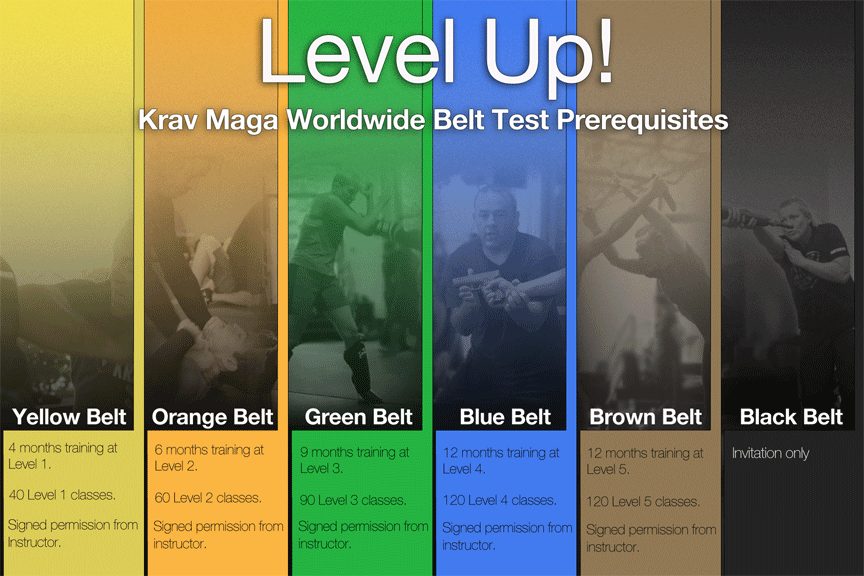
Krav Maga belts and Krav Maga Levels in detail.
Level 1
“The goal of this level is to teach the basics of fighting and self-defense.”
Students training in Krav Maga Level 1 learn critical fundamentals. It starts from the ground up, literally, by learning an effective fighting stance. Students also learn how to move correctly in a fighting stance.
For some people this is harder than it may seem. Many people struggle with coordination and balance. Some students come from other disciplines, like conventional boxing, that don’t involve striking with the lower body.
From building a solid fighting stance, Level 1 progresses to teaching fundamental “combatives” or striking techniques. Level 1 also teaches basic punch defenses. This is really the backbone of self-defense. Krav Maga Worldwide self-defense training stresses using aggressive counterattacks to fight back and win against an assault.
Students in Level 1 learn things punches, kicks, knees, elbows, eye-strikes, throat strikes, and hammer fists. They also learn how to develop power in all of these strikes. That’s one of the reasons Level 1 is very focused on striking techniques. Throwing powerful strikes means the ability to make damage to an opponent.
Level 1 also teaches students to defend against very common, real world, attacks. These are things like chokes, headlocks, and getting grabbed. Students in Level 1 are also taught very basic ground fighting techniques that involve body positing and movement while on the ground.
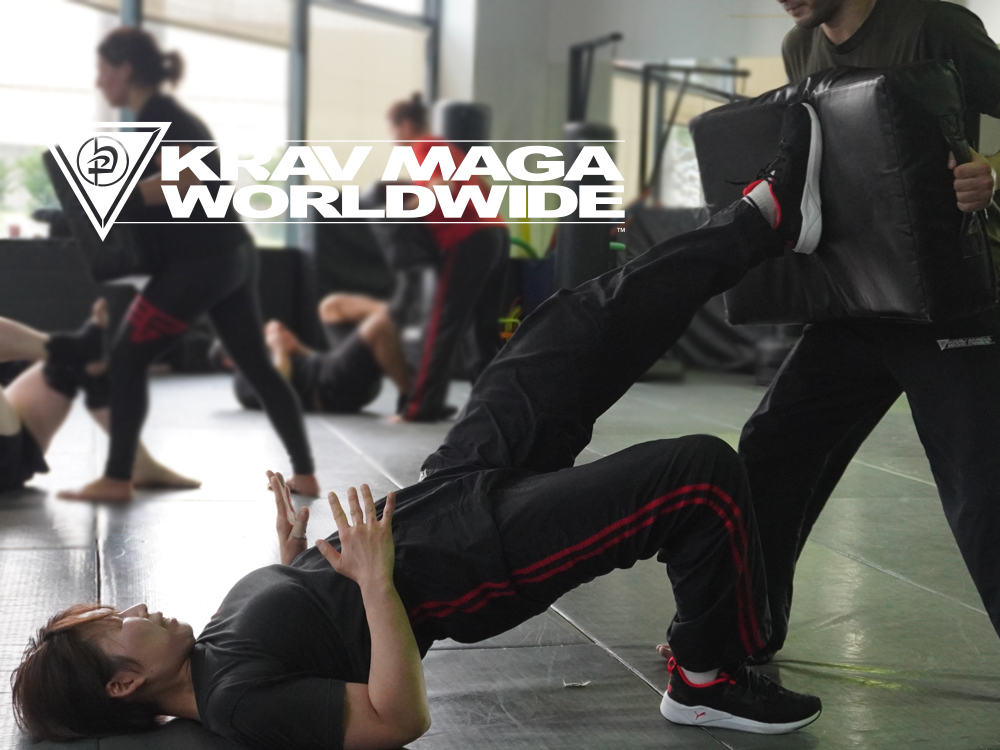
The Krav Maga Worldwide self-defense system requires four months of training in Level 1. Students must complete a minimum of 40 classes in that time to be eligible to take the test for Level 2. Passing the test means earning a Yellow belt.
Level 2
“Precision elements such as timing, distance, and alternative targeting are introduced.”
Training begins to intensify in Level 2. Students continue training with a focus on combatives but in a more technical way. This involves things like hook punches, uppercuts, overhands, and kick variations.
Working with equipment like focus mitts and Thai pads in Level 2 helps students refine the power in their striking techniques and develop both timing and spatial awareness. This is a key element in how to learn to fight.

It’s twofold. First, understanding where you need to be in order to cause the most damage to an opponent. Second, understanding where you don’t want to be so that your opponent can’t cause damage to you. Developing this skill is essential to fight training.
Level 2 self-defense techniques involve defending and counterattacking simultaneously when striking and a focus on bearhug defenses. It’s important that, in Level 2, students develop the capability to fight off a bearhug that would result in a slam to the ground or abduction scenario.
The curriculum in Level 2 also begins to dive deeper into self-defense techniques that are essential for when a fight hits the ground. Level 2 training involves defenses against pin variations like the full mount position. Students must learn what to do if they wind up in the bottom position in a ground fight.
The Krav Maga Worldwide self-defense system requires six months of training in Level 2. Students must complete a minimum of 60 classes in that time to be eligible to take the test for Level 3. Passing the test means earning an Orange belt.
Level 3
“The third level of Krav Maga self-defense classes sharpen basic techniques and allow students to further expand their foundation of Krav Maga attacks and defenses.”
Full-contact training really begins in Level 3. It’s in this level that students can really start to develop into skilled fighters. Almost every class will involve some sort of sparring drill or full-contact sparring on the feet.
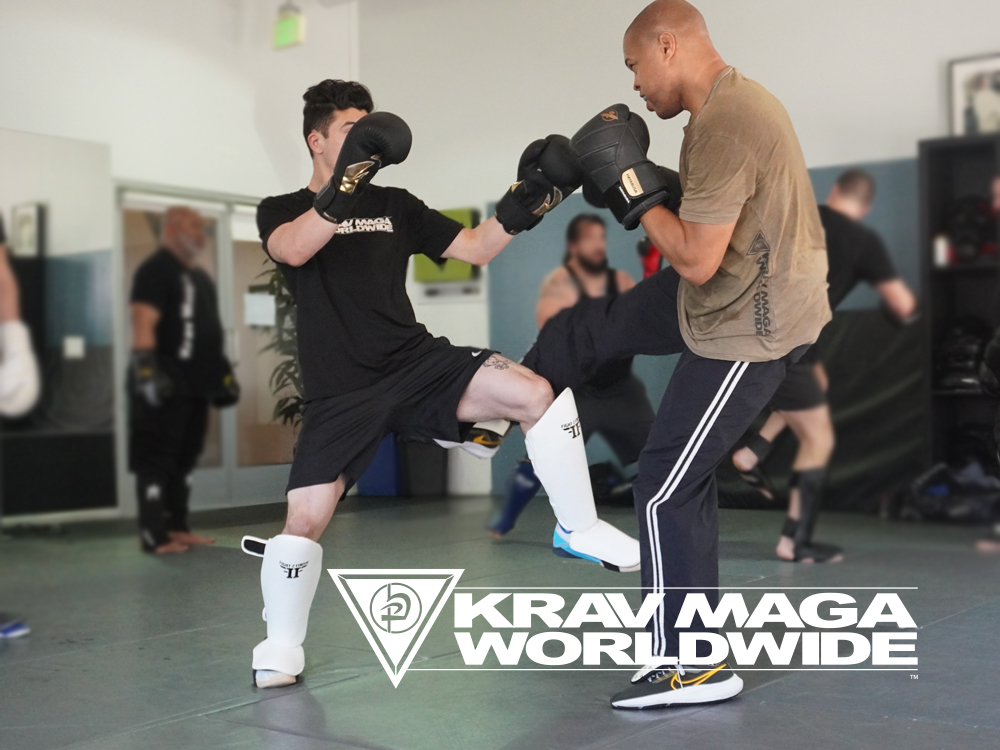
Level 3 becomes more complex in terms of defenses against high-level striking. This is really about learning to react and defend against somewhat unorthodox attacks when unprepared. This is really crucial because Krav Maga is a self-defense system.
Training from the perspective of defending first, and not initiating an attack or assault, means having to deal with the element of surprise, or being ambushed. That’s really what an assault on the streets is about.
Students learn things like defending from unorthodox angles as well as fall-breaks and forward and backward rolls. All of these things are key in staying protected if attacked, knocked off balance, or thrown.
Krav Maga Level 3 also involves more ground fight training and ground fighting techniques. Krav Maga stresses the concept of “Control. Damage. Get out.” when it comes to a fight on the ground. Students in Level 3 learn fundamental wrestling, pins, sweeps and fundamental joint locks like arm bars.
The Krav Maga Worldwide self-defense system requires six months of training in Level 3. Students must complete a minimum of 90 classes in that time to be eligible to take the test for Level 3. Passing the test means earning a Green belt.
Level 4
“In addition to refining tactics and techniques learned in previous levels, students encounter high threat weapons defenses, learn to deal with attacks from multiple opponents, and learn more advanced ground fighting techniques.”
Level 4 is where students start to deal with increasingly intense “worst case scenarios”. This is really about the intense focus on weapons defenses in Level 4. It’s really crucial and empowering training.
Students learn to defend against attackers armed with knives, handguns, and blunt objects like sticks and baseball bats. The training involves both weapon threats and attacks.
For example, students train on scenarios like being held at knifepoint or a knife “threat”. Students also train to defend against an attacker actively attempting to stab them. These types of defense vary depending on the range of the weapon in question.
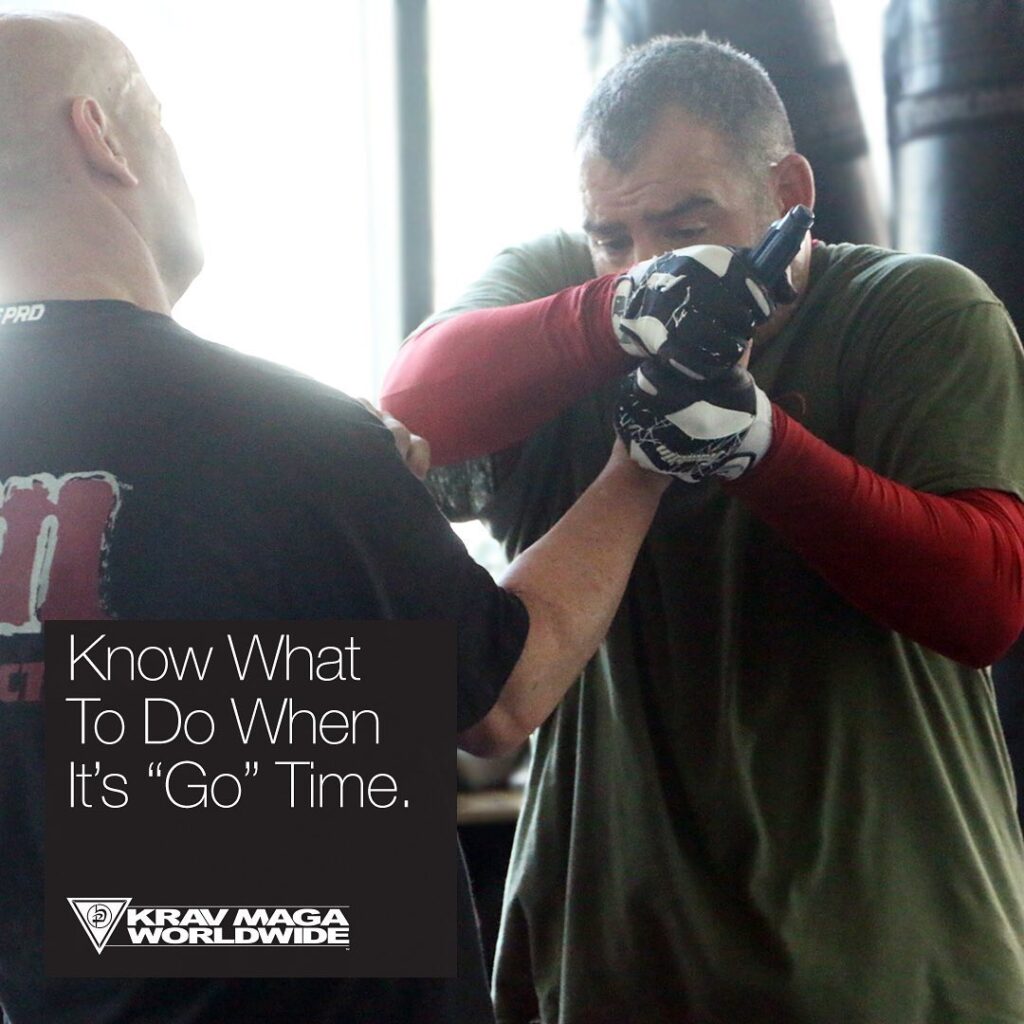
Level 4 training continues to build hand-to-hand fighting skills with regular full-contact sparring and grappling/ground fighting.
The Krav Maga Worldwide self-defense system requires 12 months of training and 120 classes completed in that time to be eligible to take the test for Level 4. Passing the test means earning a Blue belt.
Level 5
“This advanced Krav Maga self-defense course is home to our most skilled fighters. Students will encounter the entire curriculum of fighting, ground fighting, third-party protection, and defense against all manner of weapons.”
Students develop expertise in Level 5. Mastery of fundamental techniques and tactics from previous levels is expected and required. Level 5 is really about becoming the best possible self-defense weapon that a student can be.
The training in this level is very closely related to Krav Maga’s military roots. The curriculum involves extensive fight training and weapons defenses. High-concept tactics and training are at the heart of every class.
Level 5 training teaches students to deal with things like long-guns, weapon vs. weapon training, and even improvised weapons training.
The Krav Maga Worldwide self-defense system requires 12 months of training and 120 classes completed in that time to be eligible to take the test for Level 5. Passing the test means earning a Brown belt.
Brown belt students continue to train in Level 5 and are eligible for invitation to test for Black belt.
Receiving an invitation to test for a Black belt is based on the student’s continued progress and consistency in Level 5 training. Black belt tests are generally held once or twice a year.
What is the most important Krav Maga belt level?
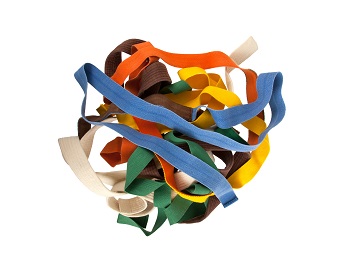
The honest answer is that the most important Krav Maga belt level is the level the student is currently training in. No belt level should be overlooked. If someone is not currently training in Krav Maga, they should be.
By that logic, it could be argued that the most important level of training is Level 1 during which the student has no belt rank. The students in Level 1 are doing more to make themselves safer and stronger than any person who is not training.
Yes, Krav Maga Level 5 trains on super dangerous situations and tactics. It’s potentially life-saving training…but Level 1 training is potentially life-saving as well. It’s not reasonable to think that a person could jump into Level 5 without acquiring all the skills that are necessary to train at that level. Imi designed the system to be progressive and to build on itself.
Belts in self-defense and martial arts training tend to become sensationalized. No single level is really more important than the next. What is important is consistency in training and consistency in progression. Always be learning. Always be refining. Always be pushing to be safer and stronger.
Krav Maga near me?
Training at a Krav Maga Worldwide certified training center is the best way to learn real world self-defense skills and to get in the best shape of your life.
If you want to find “Krav Maga classes near me” or “Krav Maga training near me” click this link to find our searchable map. The map will use your zip code to find the closest Krav Maga Worldwide certified training center to your location.
You can also give us a call at 800-572-8624 and we’ll help you.
